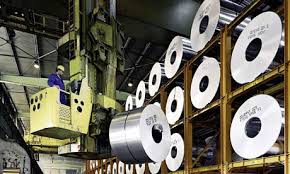Factory output declined in April as manufacturing activity in New York slowed down. These were seen as signs that the global demand has made an impact on the US economy. The slow growth was also caused by the largest decline in wholesale prices in three years. The Federal Reserve has to keep its stimulus program in order to bolster the economy.

US Treasury debt prices increased as the dollar declined from its 4 and a half year highs against the yen as investors bet on the Fed policy. Stocks on Wall Street went up while gold prices dropped to their lowest in a month.
Manufacturing production dropped 0.4 percent last month after the decline of 0.3 percent in March. It pushed overall industrial output lower by 0.5 percent, which was more March’s 0.3 percent gain. Economists estimated industrial output to drop only 0.2 percent in April.
The recession in the euro region as well as the slower growth in China has resulted to lower demand for US exports. It took some momentum from the factory sector. It was also hurt by the strong dollar against both the yen and the euro.
Manufacturing was hit hard by the budget cuts in Washington, especially the effect of sequestration worth $85 billion that took effect last March 1. Employment, retail, and housing sectors have shown resilience that would curb the degree of the slowdown of the economy. Manufacturing is around 12 percent of the nation’s GDP.
